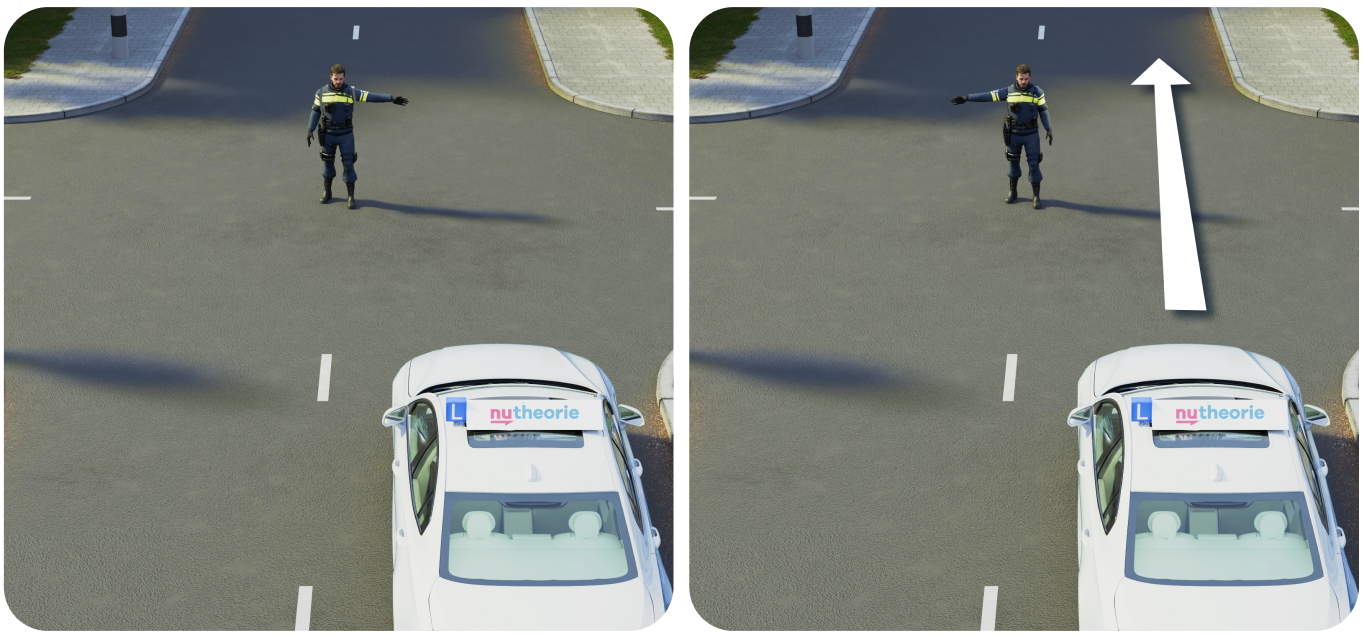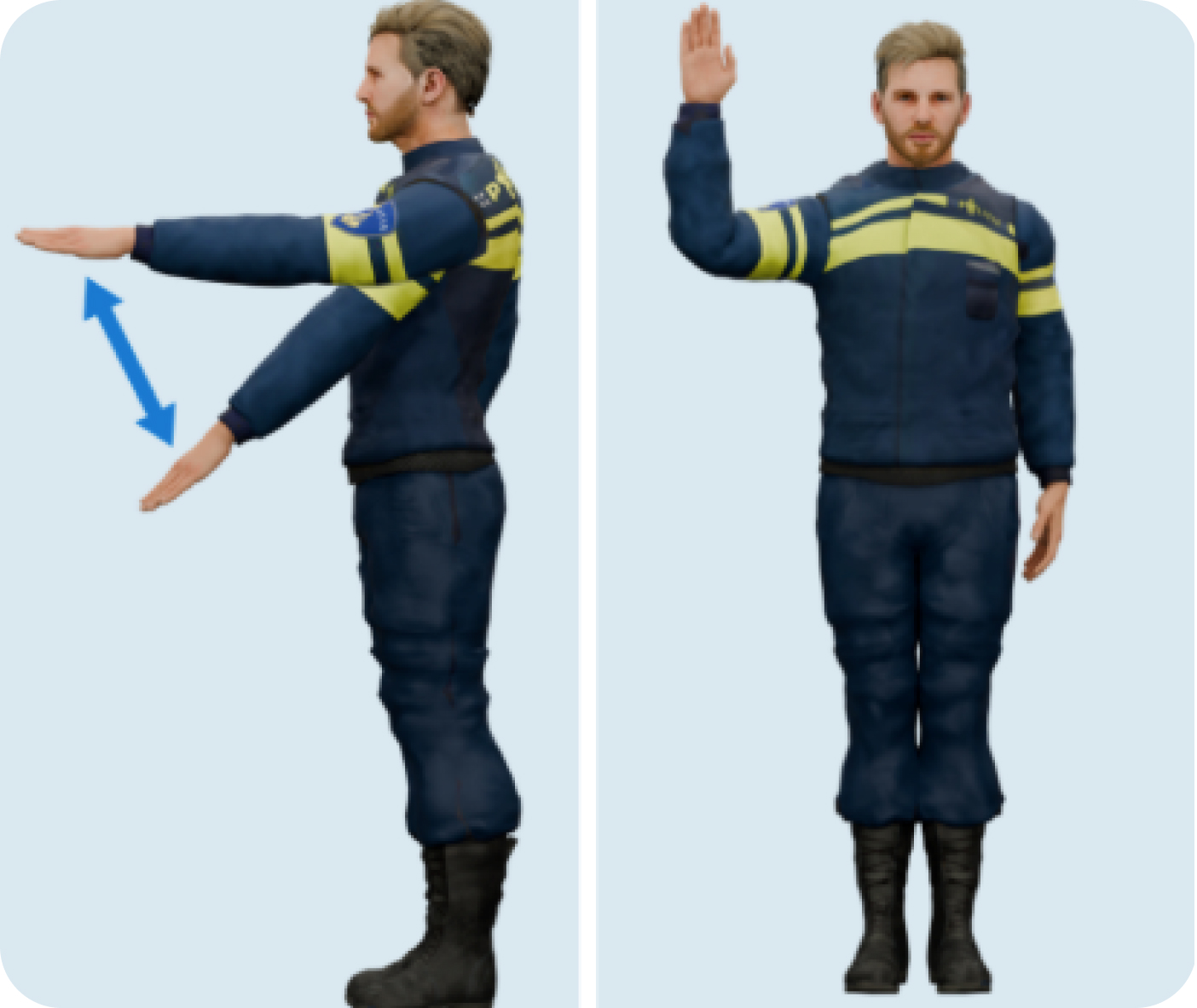The Role of the Traffic Controller in the CBR Theory Exam
When preparing for the CBR theory exam, it's important to not only know traffic signs and lights but also how to act when a traffic controller is present.
In real traffic and on the exam a traffic controller can make the difference between passing and failing.
The Traffic Controller in the CBR Theory Exam
During the CBR theory exam, you need to know how to act when a traffic controller is on the road. Some questions specifically test whether you understand that instructions from a traffic controller always take precedence over traffic lights, signs, and road markings. You must also recognize what certain gestures from a traffic controller mean, like a stop signal or a sign to slow down. So remember: if you see a traffic controller in an exam question, your behavior should be based on their instructions, not the traffic light or sign. Paying close attention to this topic can be the key to passing or failing! The CBR exam often tests whether you know the right of way rules in unusual situations.
Keep in mind:
- Instructions from a traffic controller always override traffic lights, traffic signs, and road markings.
- If a traffic controller gives you a stop signal while the traffic light is green, you must stop.
Who's in Charge? The Traffic Controller is Top Priority
Traffic rules, signs, signals, and lights are all part of the system. But what if they conflict? Who do you follow then? The answer is simple: the traffic controller always has the final say.
When a traffic controller is present, their instructions overrule everything else. This means you must stop even if the traffic light is green and the controller gives you a stop signal. At that point, traffic signs and road markings lose their immediate authority.
A quick summary of the traffic rule hierarchy (from high to low):
- Instructions from traffic controllers
- Traffic lights
- Traffic signs and road markings
- Legal traffic rules
Example:
Suppose you're driving on a priority road with a green traffic light, but a traffic controller gives you a stop signal. You must stop immediately, even though it “seems” like everything is in your favor. Ignoring the instruction not only endangers yourself and others but can also result in a hefty fine. Traffic controllers are not deployed randomly. They are there when normal rules aren’t sufficient, think power outages, accidents, roadworks, or events. Clear and direct control is crucial in such situations.
In short: if you see a traffic controller, pause your usual rulebook and follow their signals. Their gestures are the law at that moment.
Easy Way to Remember: People over machines, whistle over signal light. If there’s someone physically directing traffic, they take precedence over anything else around them.









